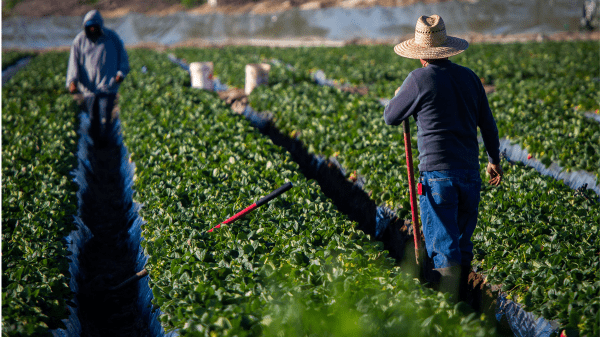The adverse effect wage rate (AEWR) is one of many features that make the H-2A guestworker program unpopular with growers. One recent innovation makes it more so. This new provision applies multiple wage rates rather than the single statewide rate that had previously been in place.
The AEWR is a minimum wage that employers of H-2A workers must pay. It gets its cumbersome name from the fact that it is intended to prevent the undercutting of domestic workers’ wages by those for guestworkers.

The new measure, implemented as of March 30, varies the AEWR by job category. “Among the jobs that will be most impacted are truck and bus drivers, mechanics and supervisor positions—with some rates exceeding $20 per hour,” says Jamie Fussell, director of labor relations for the Florida Fruit & Vegetable Association (FFVA). Adverse Effect Wage Rates Rule Challenged – Citrus Industry Magazine
“Hand-harvesters and agriculture equipment operators will continue to have the AEWR based on the Farm Labor Survey.”
The logic, however vexing to growers, is easy to understand. Wages for hand-harvesters are low; moreover, in practice, guestworkers in this and similar jobs offer little competition for American workers, who generally avoid tasks like these.
It’s different for truck drivers and other occupations mentioned by Fussell. The Department of Labor (DOL) wants to prevent H-2A workers from undercutting wages in these higher-paid positions.
Perhaps the most important thing for employers to note is that the highest rate on a contract applies to all workers on that contract, regardless of the jobs they are doing. So, if your application includes truck driver positions, hand-harvesters on the same contract will have to be paid that wage as well.
For this reason, Fussell observes that some H-2A employers are filing separate petitions for bus drivers versus field laborers.
Fussell advises growers to consult their attorneys on the best approach.
The new regulations have particular impact in the South, which accounts for 43–45 percent of the H-2A positions certified by the DOL.
“The smaller business scales of these Southern industries relative to their peers in other regions can partially explain the region’s strong demand for H-2A workers,” explains the Southwest Farm Press. South emerges as primary regional employer of H-2A labor (farmprogress.com)
The new measures have, predictably, aroused opposition from agricultural groups. On April 23, the National Council of Agricultural Employers (NCAE) filed a motion for preliminary injunction against the new wage policy.
“The lawsuit alleges that the Secretary’s action in developing the regulation was arbitrary and capricious and an abuse of the Secretary’s discretion,” says an NCAE press release. NCAE Challenges Adverse Effect Wage Rate Rule – NCAE (ncaeonline.org)
One charge implicated the DOL’s “continued misuse of survey instruments.”
The new AEWR rates have also aroused opposition in Congress, although it is likely to be ineffective, since a measure eliminating them would have to be signed by President Biden, who is unlikely to take the side of the Republican majority House of Representatives against his own administration. https://www.producebluebook.com/2023/03/24/new-aewr-rates-challenged-in-congress/



